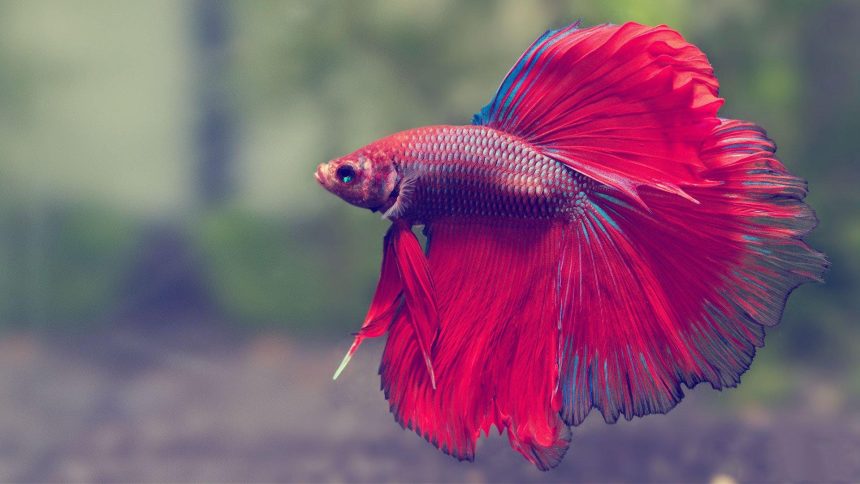The giant betta is a magnificent fish that has captured the hearts of many aquarium enthusiasts. Known for its impressive size and vibrant colors, this fish is a unique and beautiful addition to any tank. In this article, we’ll take a closer look at the giant betta, including its characteristics, care requirements, and some tips for keeping these majestic fish happy and healthy.
What is a Giant Betta?
The giant betta, also known as the King betta, is a type of Siamese fighting fish (Betta) that has been selectively bred to be larger than the traditional betta. While standard bettas typically grow to around 2-3 inches in length, giant bettas can reach up to 4-5 inches in length, with some individuals growing even larger.
In addition to their impressive size, giant bettas are also known for their vibrant colors and unique patterns. They come in a range of colors, including red, blue, green, and purple, as well as combinations of these colors. Some giant bettas also have iridescent scales that shimmer in the light, adding to their beauty.
Giant Betta Care Requirements
If you’re considering adding a giant betta to your aquarium, it’s important to understand their care requirements to ensure that they thrive. Here are some key factors to consider:
Tank Size: Because giant bettas are larger than standard bettas, they require a larger tank to accommodate their size. A tank that is at least 10 gallons in size is recommended, although a larger tank is even better. This will give your fish plenty of room to swim and explore, as well as provide a more stable environment for their health.
Water quality: Like all fish, giant bettas require clean, well-maintained water to thrive. Perform regular water changes of at least 25% every week, and use a water conditioner to remove chlorine and other chemicals from tap water. Test your water regularly to ensure that the pH, ammonia, nitrite, and nitrate levels are within safe ranges.
Temperature: Giant bettas are tropical fish and require water temperatures between 76-82°F (24-28°C) to thrive. Use a reliable aquarium heater to maintain a consistent temperature, and avoid placing the tank in areas that experience temperature fluctuations, such as near windows or doors.
Diet: Giant bettas are carnivorous fish and require a diet high in protein. Feed them a variety of foods, including high-quality betta pellets, frozen or live foods like bloodworms and brine shrimp, and occasional treats like boiled peas or chopped vegetables.
Enrichment: Like all bettas, giant bettas require environmental enrichment to keep them healthy and happy. Provide them with hiding places like plants or caves, and consider adding a few floating plants to the surface of the water to create shaded areas. Giant bettas also enjoy having objects to interact with, such as a mirror or small toys.
Breeding Giant Bettas
Breeding giant bettas can be a rewarding but challenging experience. Unlike standard bettas, which can be bred in small tanks or bowls, giant bettas require a larger breeding tank and specific conditions to successfully breed.
To breed giant bettas, you’ll need a breeding pair, which should be carefully selected for their size, health, and coloration. Once you have a breeding pair, you’ll need to condition them by feeding them a high-protein diet and gradually increasing the temperature and water level in their tank.
Once the pair is ready to breed, the male will begin to build a bubble nest at the surface of the water. The female will then be introduced to the tank, and the male will begin to court her, displaying his impressive fins and colors.
If successful, the female will lay her eggs, which the male will fertilize and carefully guard in his bubble nest. The eggs will hatch within a few days, and the male will continue to care for the fry by blowing water over them and keeping the nest clean.
Raising giant betta fry requires careful attention to water quality and feeding. The fry should be fed several small meals a day of freshly hatched brine shrimp or commercially available fry food. As they grow, they can be transitioned to larger foods like finely crushed betta pellets.
It’s important to note that breeding giant bettas can be a complex process that requires significant knowledge and experience. If you’re new to breeding bettas, it’s best to start with the standard size before attempting to breed giant bettas.
Conclusion
The giant betta is a stunning and unique fish that can make a wonderful addition to your aquarium. With their impressive size, vibrant colors, and unique personalities, these fish are sure to capture the attention of anyone who sees them.
To keep your giant betta healthy and happy, make sure to provide them with a spacious tank, clean water, a balanced diet, and plenty of environmental enrichment. And if you’re interested in breeding giant bettas, make sure to do your research and approach the process with care and caution.
Overall, the giant betta is a fascinating and captivating fish that is sure to bring joy and beauty to any aquarium.














